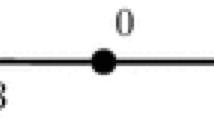Abstract
The maximal covering subtree problem has applications in transportation network design and extensive facility location. A subtree of a network is a tree that is not a full spanning tree. Finding an optimal subtree may involve the two objectives, minimizing the total arc cost or distance of the subtree, and maximizing the subtree's coverage of population or demand at nodes. Coverage may be defined as direct or indirect: indirect coverage requires that a node be within a distance threshold s>0 of the subtree, and direct coverage requires that a node be connected to the subtree (s=0). Previous approaches to this problem have sought to identify optimal subtrees of a “parent” network that is itself a tree (e.g., a minimum spanning tree). In this paper four new bi-objective zero–one programming models are presented. The first two are models for the problem of finding optimal subtrees on a single spanning tree parent under conditions of (1) direct and (2) indirect coverage. These problems have been addressed previously in the literature. In the third and fourth models, the subtree can be selected from among multiple candidate parent spanning trees simultaneously. The latter models address a new generalization of the first problem and offer both increased flexibility and the potential for a more diverse array of solutions. The models have “integer-friendly” solution properties and are relatively small in terms of the number of decision variables and constraints. Computational experience is reported for a demonstration problem and results are compared to the results of previous models.
Similar content being viewed by others
References
Church, R. and J. Current. (1993). “Maximal Covering Tree Problems.” Naval Research Logistics 40, 129–142.
Cohon, J.L. (1978). Multiobjective Programming and Planning. New York: Academic Press.
Current, J. and H.K. Min. (1986). “Multiobjective Design of Transportation Networks: Taxonomy and Annotation.” European Journal of Operational Research 26, 187–201.
Hutson, V.A. and C.S. ReVelle. (1989). “Maximal Direct Covering Tree Problems.” Transportation Science 23(4), 288–299.
Hutson, V.A. and C.S. ReVelle. (1993) “Indirect Covering Tree Problems on Spanning Tree Networks.” European Journal of Operational Research 65, 20–32.
Kim, T.U., J.T. Lowe, J.E. Ward, and R.L. Francis. (1990). “A Minimum Length Covering Subtree of a Tree.” Naval Research Logistics 18, 309–326.
Kincaid, R.K., T.J. Lowe, and T.L. Morgan. (1988). “The Location of Central Structures in Trees.” Computers and Operations Research 15(2), 103–113.
Kruskal, J.B. (1956). “On the Shortest Spanning Tree of a Graph and the Traveling Salesman Problem.” Proceedings of the American Mathematical Society 7, 48–50.
Nemhauser, G.L. and L.A. Wolsey. (1988). Integer and Combinatorial Optimization. New York: Wiley.
Magnanti, T.L. and R.T. Wong. (1984). “Network Design and Transportation Planning: Models and Algorithms.” Transportation Science 18, 1–55.
Magnanti, T.L. and L.A. Wolsey. (1995). “Optimal Trees.” In: M.O. Ball, T.L. Magnanti, C.L. Monma, and G.L. Nemhauser (eds.), Network Models. Amsterdam: Elsevier.
Mesa, J.A. and T.B. Boffey. (1996). “A Review of Extensive Facility Location in Networks.” European Journal of Operational Research 95, 592–603.
Prim, R.C. (1957). “Shortest Connection Networks and Some Generalizations.” The Bell System Technical Journal 36, 1389–1401.
ReVelle, C. (1993). “Facility Siting and Integer-Friendly Programming.” European Journal of Operational Research 65, 147–158.
Author information
Authors and Affiliations
Rights and permissions
About this article
Cite this article
Williams, J.C. Optimal Direct and Indirect Covering Trees. Annals of Operations Research 123, 265–284 (2003). https://doi.org/10.1023/A:1026187616229
Issue Date:
DOI: https://doi.org/10.1023/A:1026187616229




